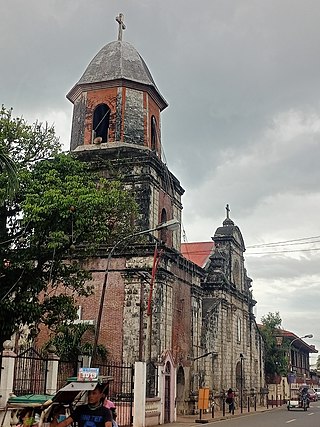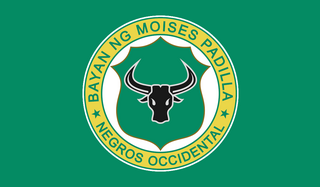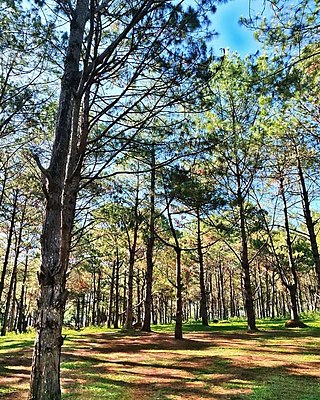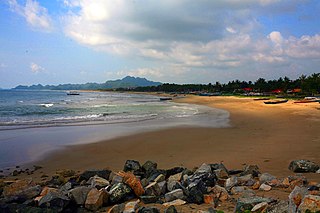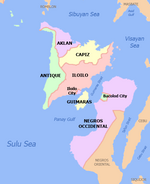Kabankalan | |
|---|---|
| City of Kabankalan | |
 | |
| Nickname: The Rising City of the South | |
| Anthem: "Kabankalan, Halandumon nga Siyudad" | |
 Map of Negros Occidental with Kabankalan highlighted | |
Location within the Philippines | |
| Coordinates: 9°59′N122°49′E / 9.98°N 122.82°E | |
| Country | Philippines |
| Region | Negros Island Region |
| Province | Negros Occidental |
| District | 6th district |
| Founded | March 14, 1907 |
| Cityhood | August 2, 1997 |
| Named for | Nauclea orientalis (locally called Bangkal) |
| Barangays | 32 (see Barangays) |
| Government | |
| • Type | Sangguniang Panlungsod |
| • Mayor | Benjie M. Miranda |
| • Vice Mayor | Miguel M. Zayco |
| • Representative | Mercedes K. Alvarez |
| • City Council | Members |
| • Electorate | 104,994 voters (2022) |
| Area | |
• Total | 697.35 km2 (269.25 sq mi) |
| Elevation | 228 m (748 ft) |
| Highest elevation | 1,455 m (4,774 ft) |
| Lowest elevation | 0 m (0 ft) |
| Population (2020 census) | |
• Total | 200,198 |
| • Density | 290/km2 (740/sq mi) |
| • Households | 45,285 |
| Economy | |
| • Income class | 1st city income class |
| • Poverty incidence | 27.44 |
| • Revenue | ₱ 1,398 million (2020), 709.7 million (2012), 698.5 million (2013), 789.6 million (2014), 850.1 million (2015), 943.1 million (2016), 1,048 million (2017), 1,131 million (2018), 1,262 million (2019), 1,537 million (2021), 2,189 million (2022) |
| • Assets | ₱ 5,211 million (2020), 2,418 million (2012), 2,548 million (2013), 2,679 million (2014), 2,778 million (2015), 3,194 million (2016), 3,702 million (2017), 4,084 million (2018), 4,556 million (2019), 5,943 million (2021), 6,631 million (2022) |
| • Expenditure | ₱ 1,042 million (2020), 507.5 million (2012), 520.4 million (2013), 507.9 million (2014), 560.1 million (2015), 561.1 million (2016), 648.8 million (2017), 714.2 million (2018), 818.9 million (2019), 1,017 million (2021), 1,319 million (2022) |
| • Liabilities | ₱ 979.8 million (2020), 608 million (2012), 683 million (2013), 694.8 million (2014), 762 million (2015), 825.5 million (2016), 936.1 million (2017), 954.7 million (2018), 1,017 million (2019), 1,210 million (2021), 1,121 million (2022) |
| Service provider | |
| • Electricity | Negros Occidental Electric Cooperative (NOCECO) |
| Time zone | UTC+8 (PST) |
| ZIP code | 6111 |
| PSGC | |
| IDD : area code | +63 (0)34 |
| Native languages | Hiligaynon Karolanos Tagalog Cebuano |
| Website | www |
Kabankalan, officially the City of Kabankalan (Hiligaynon : Dakbanwa sang Kabankalan; Cebuano : Dakbayan sa Kabankalan; Filipino : Lungsod ng Kabankalan), is a component city in the province of Negros Occidental, Philippines. According to the 2024 census, it has a population of 323,108 people [4] making it the second most populous city in Negros Occidental next to Bacolod.
Contents
- History
- Cityhood
- Geography
- Climate
- Barangays
- Demographics
- Economy
- Infrastracture
- Transportation
- References
- External links
Kabankalan is applying for a Highly Urbanized City (HUC). It is also the second city with the highest gross and net income in Negros Occidental next to Bacolod.
The city hosts three major festivals: the Kabankalan Sinulog every third Sunday of January (celebrated together with Cebu City), Udyakan sa Kabankalan and the Charter Anniversary. Kabankalan is also known for its Mag-aso Falls and the Balicaocao Resort. Also located in the city is the main campus of the Central Philippines State University (CPSU).
Kabankalan City won the major award as the "Best Performing City" in Region VI in the 2011 Regional Search for Excellence in Local Governance (EXCEL). The award was given during the Pagdayaw 2011 program held at the Iloilo Grand Hotel in December 2011. [5]


















